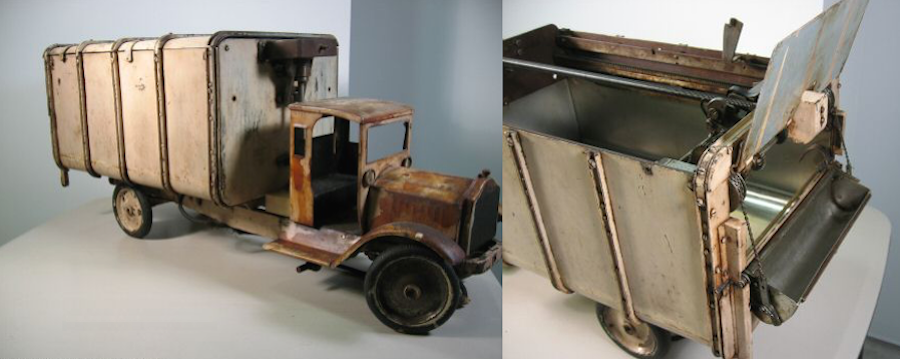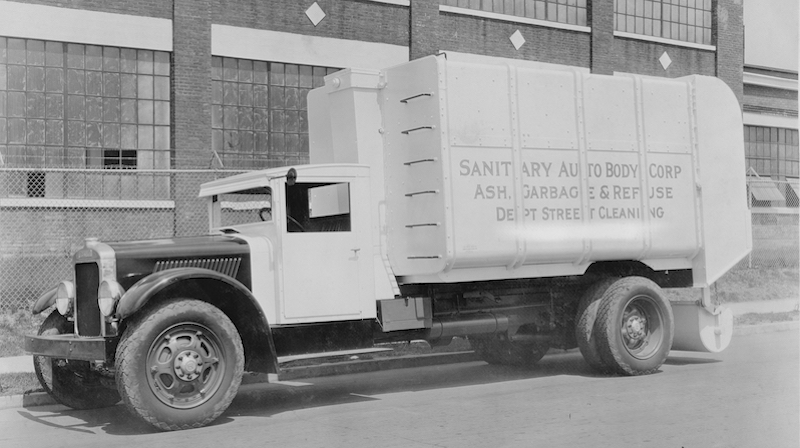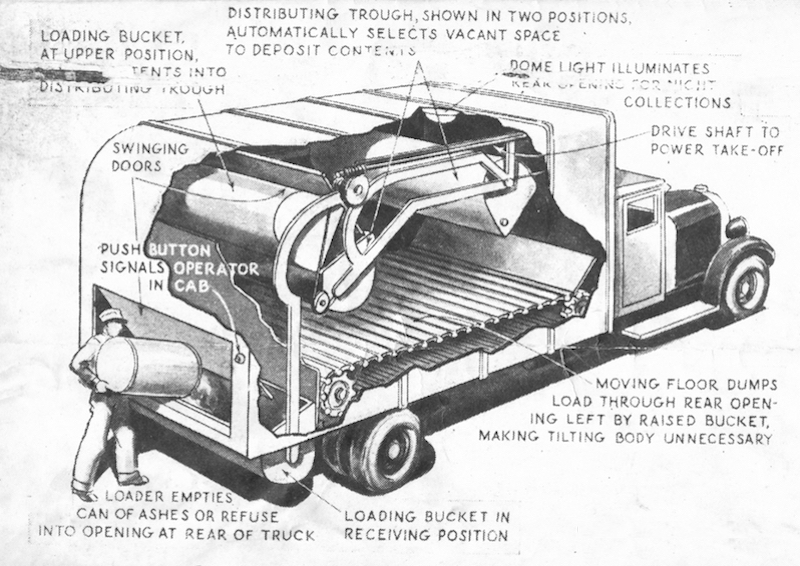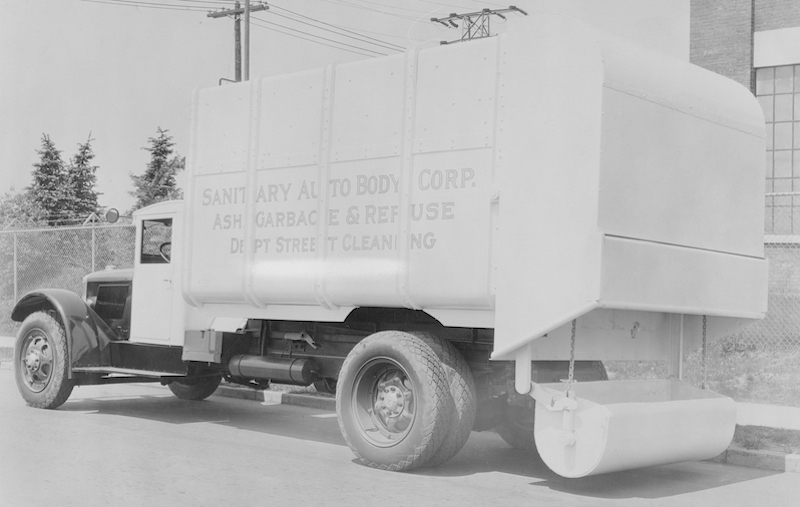
Sanitary Auto Body Corporation
Brooklyn, New York

Demonstration model of the Henry Lima truck loader, patent assigned to Sanitary Auto Body Company.
It is mounted on a Keystone Toys Packard truck chassis. An electric motor was used to drive the mechanism, with a working clutch.
The overall length is 34 inches. This model failed to meet reserve in a March 2005 Ebay auction. Its whereabouts are currently unknown.
By his own account, Henry Lima had been actively designing refuse truck bodies since about 1921. His greatest success came around 1925, when his side-bucket loader went into production by Auto Truck Industrial Appliances (ATIA) of New York, believed to be the first American self-loading body to attain some degree of mass-acceptance. Such as the industry was in 1925, the ATIA Loader was the king. A legal battle with rival Colecto in the late 1920s, followed by the Great Depression, seems to have finished off ATIA by the end of the decade.
Henry Lima remained active, patenting an open-topped rear-bucket loader which was assigned to a firm known as Sanitary Auto Body Corporation of Brooklyn in 1931. This was essentially a dump truck, with a rear-loading trough hung off the tailgate. The trough could be powered up and over the body to distribute the refuse evenly, and tilted to dump in the conventional way. It is unknown if this body ever went into production, but a hand-built working scale-model was produced, having surfaced in 2005 on the Ebay auction site.

1933 Sanitary Auto Body enclosed bucket loader with moving floor, mounted on a Relay truck chassis
Lima's next refuse body came later in 1931, similar to the earlier rear bucket loader, but now with a fully enclosed body, and a moving floor which unloaded the contents of the body without tipping. The patents were not assigned to Sanitary Auto Body, but their name appears on the only known photos (shown on these pages), and presumably they were manufacturing Lima bodies under some sort of license agreement. It is possible that Henry Lima was the owner of Sanitary, but this is not known for sure. He seems to have originated and lived mostly in Stamford, Connecticut.
The new design deserves credit for its enclosed body and novel unloading system, a great advance for 1930s refuse trucks. However, the design featured many moving parts, operating inside a dusty environment, and its practicality seems dubious even for the day. the hard economic conditions of the early 1930s probably didn't help the designs chances. However, the example shown here did exist, and possibly even more were built. The truck in the picture bears the inscription "This vehicle owned by John A. Cooke & Sons Inc., Clifton, N.J."

Details of the bucket loader and moving floor
The folio in which these pictures were found indicates that Lima was selling bodies under the name Lima Truck Bodies by the late 1930s to early 1940s. He came up with numerous other self-loading and unloading devices, including one for railroad cars, as well as a beer-keg truck! An address of Flushing, Queens was given during this period. Lima sent letters to various officials of the U.S. Government, and received positive replies indicating some interest by the armed services gearing up for war. However, little else is known about this prolific pioneer of the refuse body industry following World War II, and presumably he retired, as the industry was already well on the way to adopting hydraulic compaction bodies.

Trough in loading position

Presumably, the body was tilted to aid the moving floor in expelling the load out the rear opening
REFERENCES
Classic Refuse Trucks: ATIA
|
SELECTED PATENTS
|
Patent # |
Description |
Inventor |
Assignee |
Date |
|
US1910026 |
Self-Loading Truck |
Lima |
Sanitary Auto Body |
January 6, 1931 |
|
US1945532 |
Truck Body (moving floor) |
Lima |
Lima |
September 19, 1931 |
|
US1945533 |
Self Loading Truck |
Lima |
Lima |
October 23, 1931 |

2/9/19
© 2019
All Rights Reserved
Photos from factory brochures/advertisements except as noted
Logos shown are the trademarks of respective manufacturers
|
|
| |